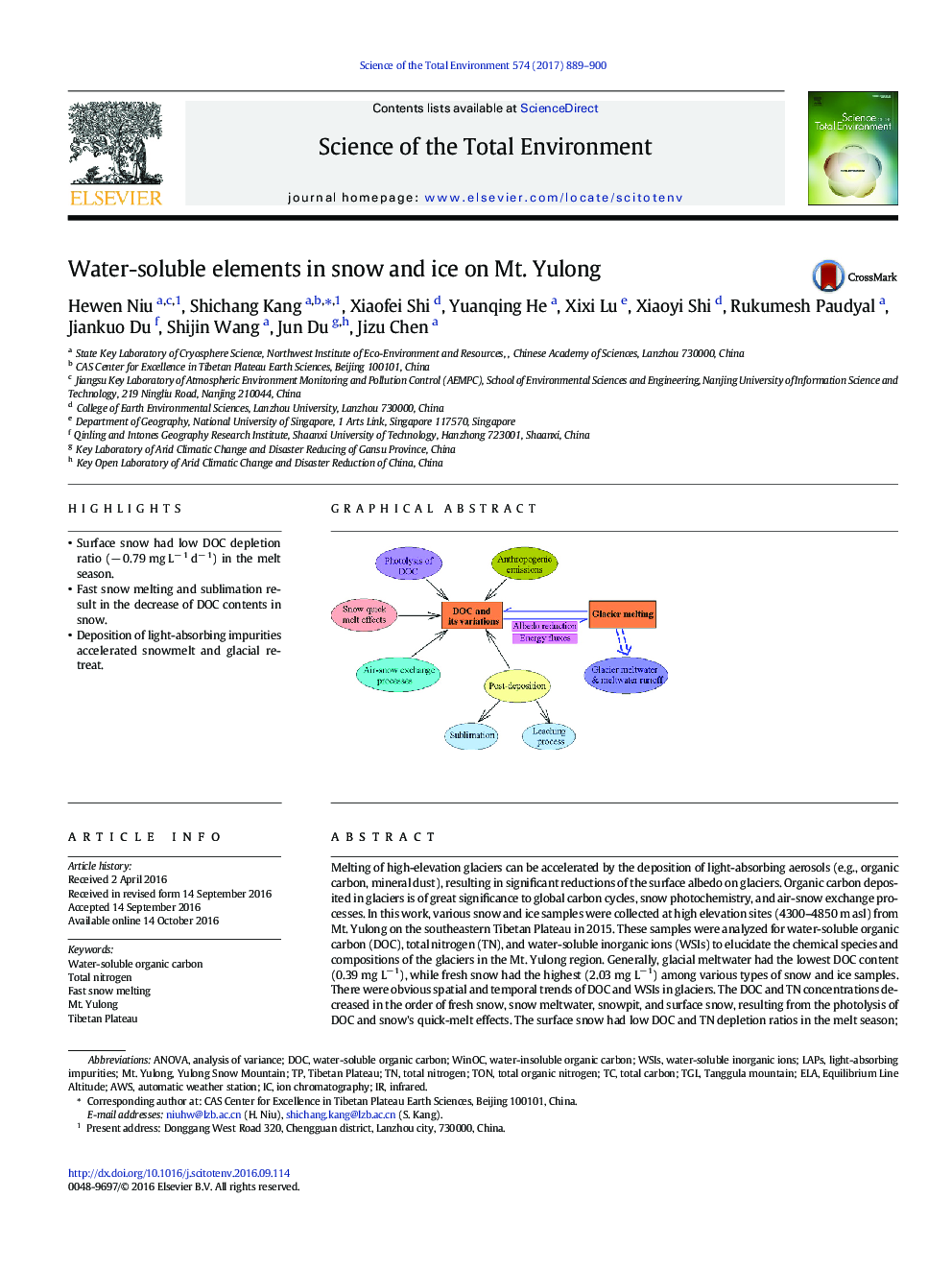| کد مقاله | کد نشریه | سال انتشار | مقاله انگلیسی | نسخه تمام متن |
|---|---|---|---|---|
| 6320369 | 1619717 | 2017 | 12 صفحه PDF | دانلود رایگان |

- Surface snow had low DOC depletion ratio (â 0.79 mg Lâ 1 dâ 1) in the melt season.
- Fast snow melting and sublimation result in the decrease of DOC contents in snow.
- Deposition of light-absorbing impurities accelerated snowmelt and glacial retreat.
Melting of high-elevation glaciers can be accelerated by the deposition of light-absorbing aerosols (e.g., organic carbon, mineral dust), resulting in significant reductions of the surface albedo on glaciers. Organic carbon deposited in glaciers is of great significance to global carbon cycles, snow photochemistry, and air-snow exchange processes. In this work, various snow and ice samples were collected at high elevation sites (4300-4850 m asl) from Mt. Yulong on the southeastern Tibetan Plateau in 2015. These samples were analyzed for water-soluble organic carbon (DOC), total nitrogen (TN), and water-soluble inorganic ions (WSIs) to elucidate the chemical species and compositions of the glaciers in the Mt. Yulong region. Generally, glacial meltwater had the lowest DOC content (0.39 mg Lâ 1), while fresh snow had the highest (2.03 mg Lâ 1) among various types of snow and ice samples. There were obvious spatial and temporal trends of DOC and WSIs in glaciers. The DOC and TN concentrations decreased in the order of fresh snow, snow meltwater, snowpit, and surface snow, resulting from the photolysis of DOC and snow's quick-melt effects. The surface snow had low DOC and TN depletion ratios in the melt season; specifically, the ratios were â 0.79 and â 0.19 mg Lâ 1 dâ 1, respectively. In the winter season, the ratios of DOC and TN were remarkably higher, with values of â 0.20 mg Lâ 1 dâ 1 and â 0.08 mg Lâ 1 dâ 1, respectively. A reduction of the DOC and TN content in glaciers was due to snow's quick melt and sublimation. Deposition of these light-absorbing impurities (LAPs) in glaciers might accelerate snowmelt and even glacial retreat.
99
Journal: Science of The Total Environment - Volume 574, 1 January 2017, Pages 889-900